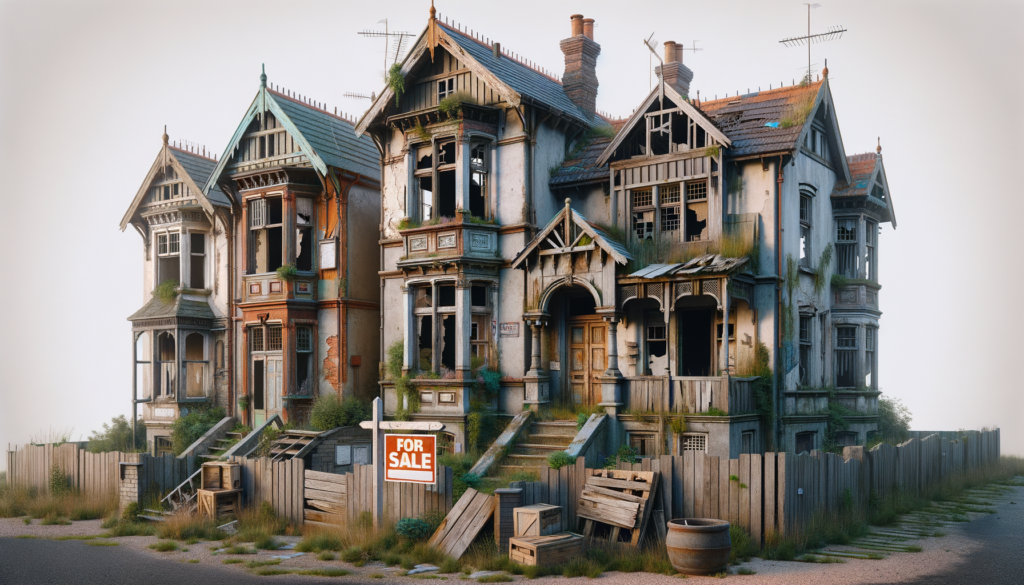The Animal Blog

Abandoned Houses: A Guide to Restoration Potential
The Allure of Abandoned Houses
Abandoned houses often evoke a sense of mystery and intrigue, drawing in potential buyers who see beyond the decay to the potential within. These properties, left behind for various reasons, offer a unique opportunity for those willing to invest time and resources into their transformation. The charm of restoring an old home lies in the ability to preserve history while creating a personalized living space. In recent years, the trend of purchasing abandoned houses has grown, with many seeing it as a way to contribute to community revitalization and personal fulfillment.
There are several reasons why houses become abandoned. Economic downturns, natural disasters, or changes in local industry can lead to properties being left unoccupied. For the savvy buyer, this presents a chance to acquire real estate at a lower cost. However, it is important to conduct thorough research and due diligence before making a purchase. Understanding the legalities, potential costs, and the extent of renovation needed is crucial in making an informed decision.
Purchasing an abandoned house can be a rewarding venture, but it requires a clear vision and commitment. Many buyers are drawn to the idea of restoring these homes to their former glory, often uncovering hidden architectural gems in the process. The journey from derelict to delightful is not without its challenges, but the end result can be incredibly satisfying both aesthetically and financially.
Legal Considerations and Acquisition
Acquiring an abandoned house involves navigating a web of legal considerations. Prospective buyers must first ascertain the legal status of the property. This includes confirming ownership, checking for any liens or back taxes, and understanding zoning regulations. Engaging with a real estate attorney can simplify this process, ensuring that all legal aspects are covered before proceeding with the purchase.
One of the initial steps in acquiring an abandoned property is to conduct a title search. This will reveal the current owner and any outstanding debts tied to the property. Clearing these debts is often a prerequisite to purchasing the home. Additionally, buyers should be aware of any local government policies that might affect the sale, such as eminent domain or redevelopment plans.
Once the legal hurdles are cleared, the next step is to negotiate the purchase. This often involves dealing with banks or government agencies if the property was repossessed or owned by the state. Patience and persistence are key during this stage, as the process can be lengthy and complex. However, successfully navigating these challenges can lead to acquiring a property with significant potential at a fraction of the market price.
Assessing Renovation Needs
After securing ownership of an abandoned house, the next critical step is assessing the renovation needs. This involves a comprehensive evaluation of the property’s condition, identifying structural issues, and estimating the cost of repairs. Hiring a professional inspector can provide invaluable insights into the state of the building, uncovering hidden problems that may not be immediately apparent.
Common issues in abandoned houses include water damage, mold, outdated electrical systems, and compromised foundations. Addressing these problems is essential to ensure the safety and habitability of the home. Creating a detailed renovation plan can help prioritize tasks and allocate resources effectively, ensuring that the most critical repairs are addressed first.
Budgeting for renovations is another crucial aspect. Costs can quickly escalate, especially if unforeseen problems arise during the restoration process. It is advisable to set aside a contingency fund to cover unexpected expenses. By carefully planning and executing the renovation, buyers can transform an abandoned house into a beautiful and functional home.
Design and Restoration
The design phase of restoring an abandoned house is where creativity and vision come to life. This is an opportunity to blend the old with the new, preserving historical elements while incorporating modern amenities. Many buyers choose to highlight original features such as hardwood floors, ornate moldings, or unique architectural details, adding character and charm to the property.
Working with architects and interior designers can help bring these ideas to fruition. They can provide guidance on layout changes, material selection, and aesthetic enhancements that align with the buyer’s vision. Sustainable and energy-efficient upgrades are also worth considering, as they can reduce long-term operating costs and increase the home’s value.
Restoration is not just about aesthetics; it also involves ensuring the home meets current building codes and safety standards. This includes updating plumbing and electrical systems, reinforcing structural elements, and installing proper insulation. By balancing design aspirations with practical considerations, buyers can create a comfortable and stylish living environment.
Community Impact and Personal Fulfillment
Restoring an abandoned house can have a significant positive impact on the surrounding community. It can help revitalize neighborhoods, increase property values, and reduce crime rates associated with vacant properties. Engaging with local community groups and participating in neighborhood initiatives can further enhance the social benefits of such projects.
On a personal level, the journey of restoring an abandoned house can be incredibly fulfilling. It offers a chance to learn new skills, from carpentry to interior design, and provides a sense of accomplishment upon completion. Many homeowners find great satisfaction in breathing new life into a neglected property, creating a home that reflects their personal style and values.
In conclusion, while the process of purchasing and restoring an abandoned house is not without its challenges, the rewards can be substantial. By approaching the project with careful planning, creativity, and dedication, buyers can transform these forgotten spaces into cherished homes, contributing to both personal growth and community development.









